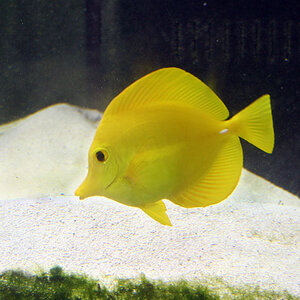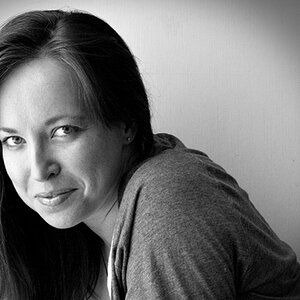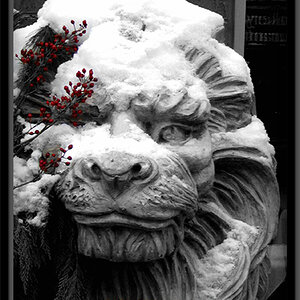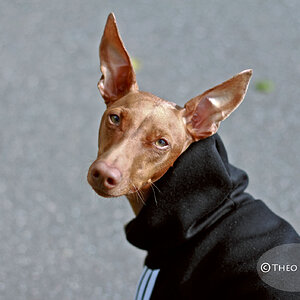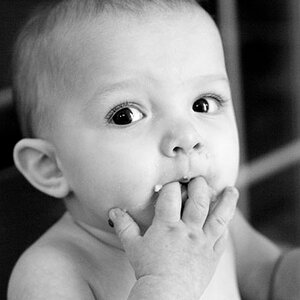ksmattfish
Now 100% DC - not as cool as I once was, but still
- Joined
- Aug 25, 2003
- Messages
- 7,019
- Reaction score
- 36
- Location
- Lawrence, KS
- Website
- www.henrypeach.com
- Can others edit my Photos
- Photos NOT OK to edit
One of the things that I think makes photos look snapshotty is harsh, frontal lighting. Basically the kind of lighting that you get if you use the on camera flash of any point-n-shoot or SLR on auto exposure. It's like we are all wandering around in a world where everyone is lit by the miners' helmet of the viewer.
Slow sync is combining flash with a slow shutter speed in order to pick up a little of the ambient light in the area.
SLRs have a focal plane shutter, and therefore have a "flash sync speed". This is the fastest shutter speed that can be used with the flash. For most entry level SLRs it's between 1/60th and 1/125th sec, depending on the model. If you use a faster shutter speed than the sync speed you will find that portions of you pic did not get flashed. On the other hand, it's okay to set a slower shutter speed. The slower the shutter speed, the more ambient light will be evident on the photo. The flash tends to "lock" the image onto the film fairly sharply, but you still need to hold the camera still or use a tripod to avoid too much camera shake.
Point-n-shoots usually have a "night mode" or something with a little star or moon. On my wife's camera it is designated by the flash symbol with an "S" next to it. Watch out when using point-n-shoots, you'll have no control over how long the shutter stays open, and on some models it can be up to four seconds after the flash goes off, so hold very still until you are sure the camera is done exposing.
Here's some pics from a wedding reception. I was using my Pentax ZX-5 with an 50mm f/1.7 lens and a Pentax dedicated flash. The film was Kodak Gold 200. For all the shots the aperture is set at f/2, and the flash is auto TTL (I'm almost positive it was firing at full blast anyway).
This is the first shot at shutter speed 1/100th, which is the ZX-5s flash sync speed.

Besides being too darn far away for the power of the flash (I was up in a balcony), the lighting in this picture is boring and sucks. What a lame reception!
Here's the same shot at shutter speed 1/15th.

Much better. Now these people are having a good time!
A few more from the same reception.


Obviously the dance floor lights add a lot of color, but even regualr household lighting provides nice background warmth when used with slow sync.
Slow sync is combining flash with a slow shutter speed in order to pick up a little of the ambient light in the area.
SLRs have a focal plane shutter, and therefore have a "flash sync speed". This is the fastest shutter speed that can be used with the flash. For most entry level SLRs it's between 1/60th and 1/125th sec, depending on the model. If you use a faster shutter speed than the sync speed you will find that portions of you pic did not get flashed. On the other hand, it's okay to set a slower shutter speed. The slower the shutter speed, the more ambient light will be evident on the photo. The flash tends to "lock" the image onto the film fairly sharply, but you still need to hold the camera still or use a tripod to avoid too much camera shake.
Point-n-shoots usually have a "night mode" or something with a little star or moon. On my wife's camera it is designated by the flash symbol with an "S" next to it. Watch out when using point-n-shoots, you'll have no control over how long the shutter stays open, and on some models it can be up to four seconds after the flash goes off, so hold very still until you are sure the camera is done exposing.
Here's some pics from a wedding reception. I was using my Pentax ZX-5 with an 50mm f/1.7 lens and a Pentax dedicated flash. The film was Kodak Gold 200. For all the shots the aperture is set at f/2, and the flash is auto TTL (I'm almost positive it was firing at full blast anyway).
This is the first shot at shutter speed 1/100th, which is the ZX-5s flash sync speed.
Besides being too darn far away for the power of the flash (I was up in a balcony), the lighting in this picture is boring and sucks. What a lame reception!
Here's the same shot at shutter speed 1/15th.
Much better. Now these people are having a good time!
A few more from the same reception.
Obviously the dance floor lights add a lot of color, but even regualr household lighting provides nice background warmth when used with slow sync.


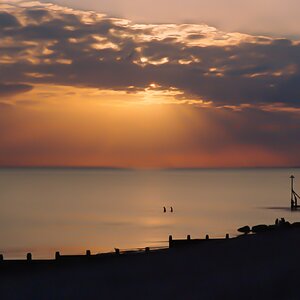
![[No title]](/data/xfmg/thumbnail/33/33361-f56184027ce743b2b7ba9d378a8bb426.jpg?1619735925)
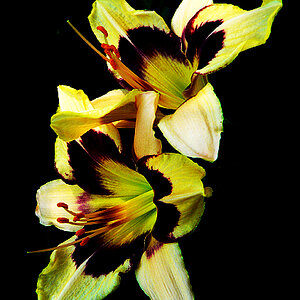
![[No title]](/data/xfmg/thumbnail/36/36299-468f060314a0ac2bf5e37da1c33149d2.jpg?1619737493)
